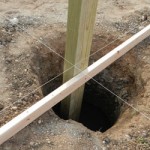Plywood – Nominal vs. Actual Thickness
My long-time former wife was a R.N. (Registered Nurse) for decades. In medicine, measures are exact – a cc is a cc. Patients do not receive about a dose of something and a pulse of 60 bpm (beats per minute) is not actually 45.
Explaining lumber sizes to her was quite a fete. She really wanted a 2×4 to be two inches by four inches, and when a 2×8 was only 7-1/4 inches deep, rather than 7-1/2” (or eight), she was highly displeased.
Luckily, she and I never got into a debate about how thick plywood sheathing is!
There are several variations available when it comes to plywood thickness, and this can have an effect on your project. Plywood thickness ranges from 1/8 inch up to 1 ¼ inches. However, bear in mind these numbers do not actually represent actual plywood thickness.
Plywood is made by peeling thin sheets of wood from a log, then gluing them together in layers with their grains perpendicular to one another. This cross-grain construction gives plywood its strength and durability. After veneers have been peeled, they are sorted by size and quality. These veneers are then clipped into uniform widths and laid out in a sequence to form a panel.
Next veneers are glued together using a hot press. Glue used can vary depending upon plywood’s intended use. For example, exterior use requires a waterproof glue, while interior plywood can use a less expensive non-waterproof glue. Hot press applies heat and pressure to veneers, bonding them together into a solid panel.
Once bonded, plywood is trimmed to its final size and sanded to remove any rough spots. Final step is to grade based upon appearance and quality. Grades range from A (highest) to D (lowest).
When plywood is sanded, during manufacturing, it can remove up to 1/32 inch of material. So, for example, a plywood sheet with a thickness of 3/8 inch really has a thickness of 11/32 inch.
Standard thicknesses for plywood panels are 1 ¼, 1 1/8, ¾, 5/8, ½, 3/8, ¼, and 1/8 inches. This makes corresponding actual thicknesses of 1 ¼, 1 1/8, 23/32, 19/32, 15/32, 11/32, 1/4, and ⅛, respectively. This takes into account sanding effects throughout plywood manufacturing processes.







